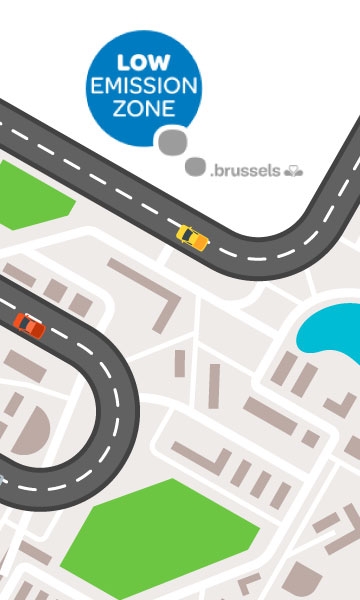By deciding to transform all of its territory into a low emission zone, the Brussels-Capital Region is giving a new concrete example of the smart city’s benefits for the people who live there. Technologies, in particular smart cameras, play an essential role in them, but also cross-functional co-operation between administrative authorities through these technologies.
A boost to the smart and sustainable city
1 January 2018: the most polluting vehicles will be banned from driving in the Brussels-Capital Region, starting with the oldest diesel-powered ones. This driving ban, valid at all times and throughout the entire region, will be extended year on year to newer vehicles, also using petrol as their fuel. This measure speeds up achieving the sustainable dimension of the smart city in the Brussels region. Part of the Air Climate Energy Plan, it is contributing to improving air quality.
A real smart city project, the low emission zone is also designed to make motorists’ lives easier. Indeed, there is no need to carry out the least administrative formality, for example getting an eco-sticker to place on your windscreen. Only foreign vehicles will have to display them.
How does the low emission zone work?
The low emission zone is one example among others of smart administration through using data held by various public services smartly. Technically, the low emission zone uses the technologies of the smart city and, in particular, the
regional video-protection platform created by the CIRB. Smart cameras, able to read a number plate, so-called “ANPR cameras”, will recognise vehicles in the traffic flow in the polluting emission categories (according to the Euro 1, 2, 3 standards etc.) which are not allowed to be driven to send a penalty ticket to their drivers. The images from the cameras will be cross-checked for this purpose with the DIV database (the government agency which manages vehicle registrations) via
Fidus, the regional services integrator.
A cross-functional project, which breaks down the barriers between administrative authorities
In the smart city, the administrative authorities operate in a network and collaborate in providing services, removing the traditional competence barriers that isolate them from each other. The low emission zone (
like the Fix My Street project) is among these cross-cutting services. In this case, no less than five regional administrative authorities collaborate to make this project work: Brussels Environment, Brussels Taxation, Brussels Mobility, the CIRB and Brussels Prevention and Security.
Finally, the low emission zone also includes a participatory component. During its development, Brussels’ citizens and businesses were able to respond to an online survey collating information about their mobility profiles so that coherent and suitable measures could be taken for this project which strengthens the position of Brussels on the world map of smart cities.
